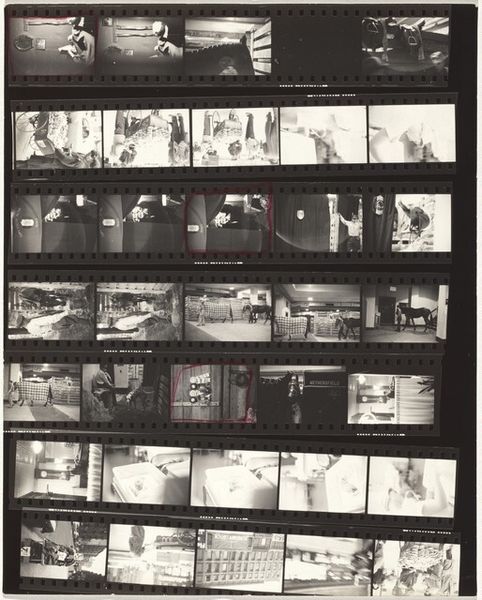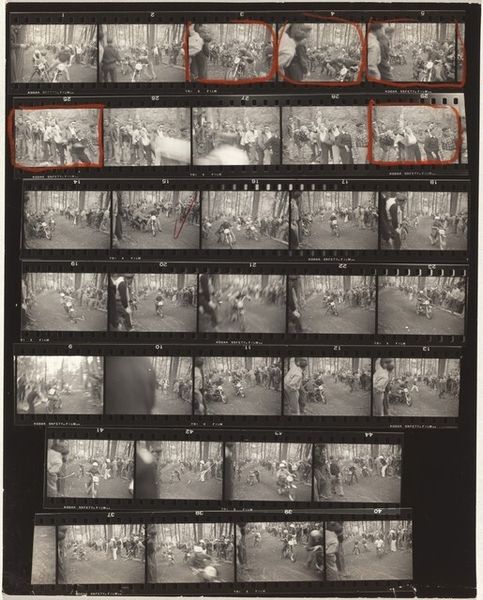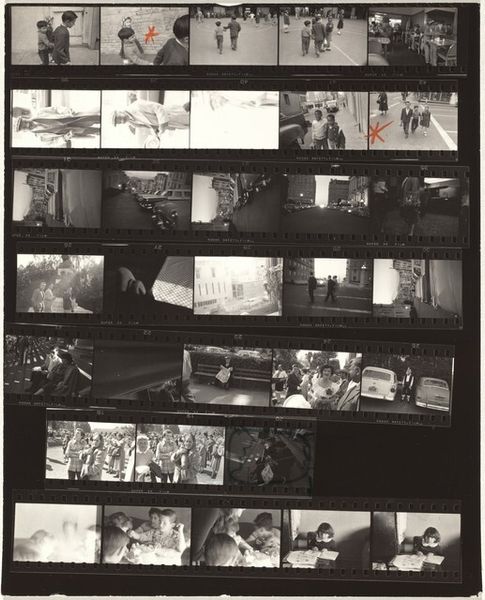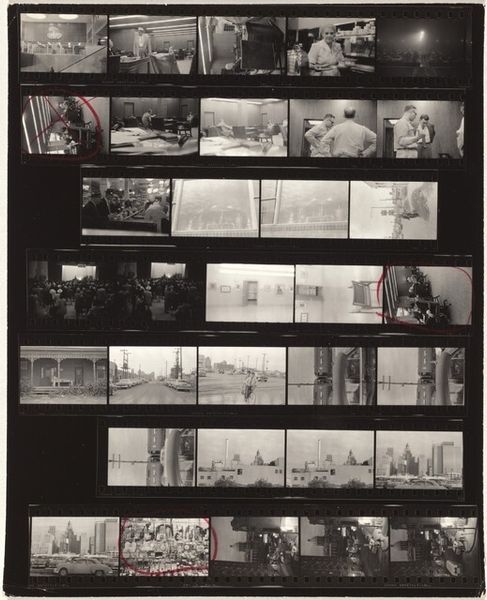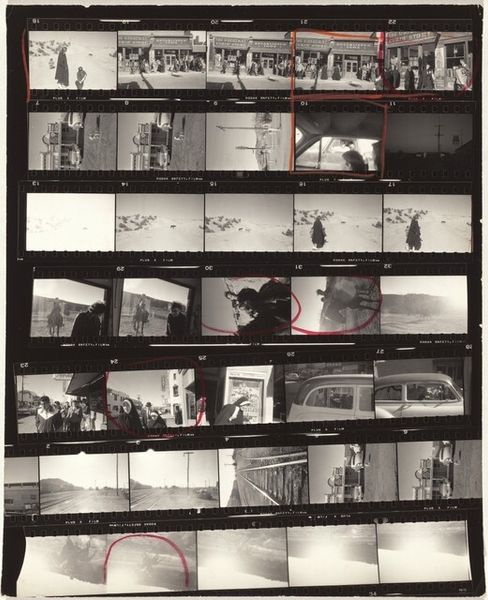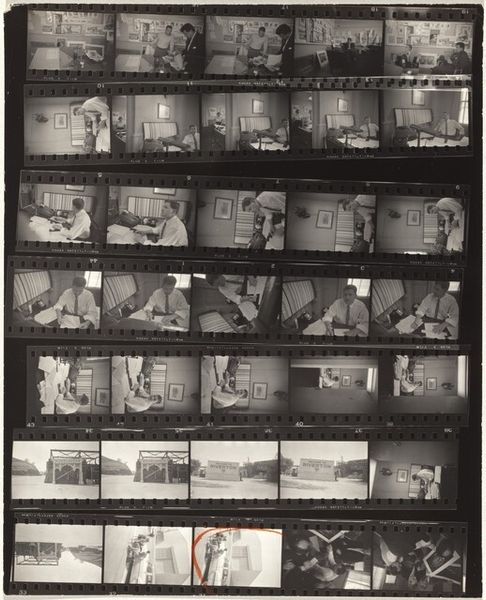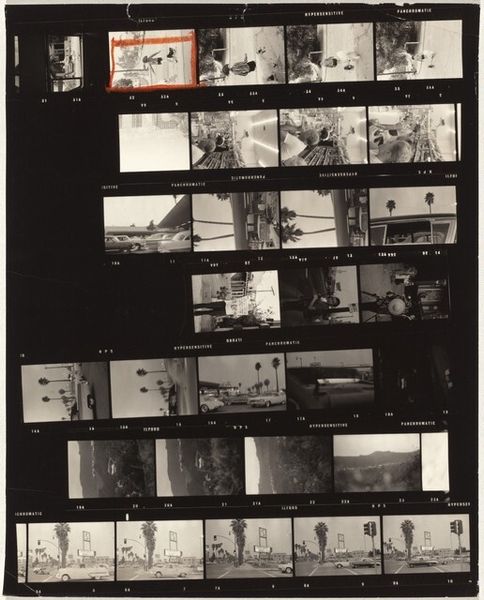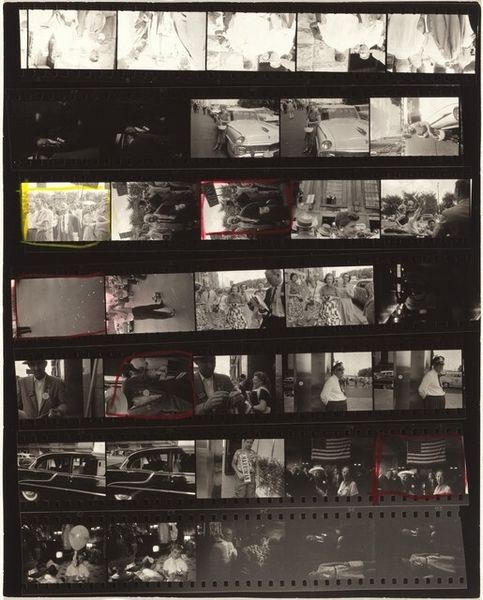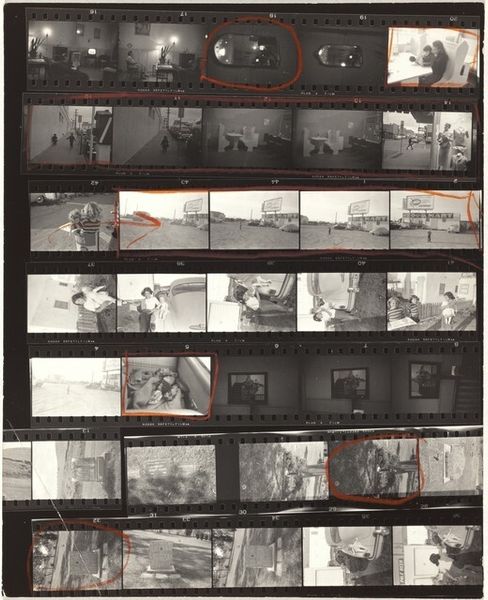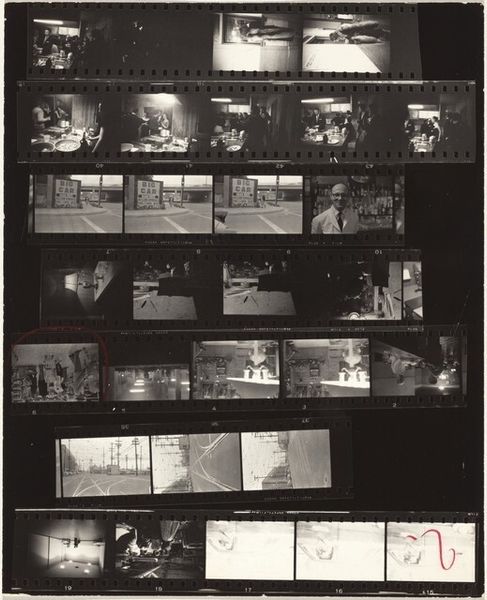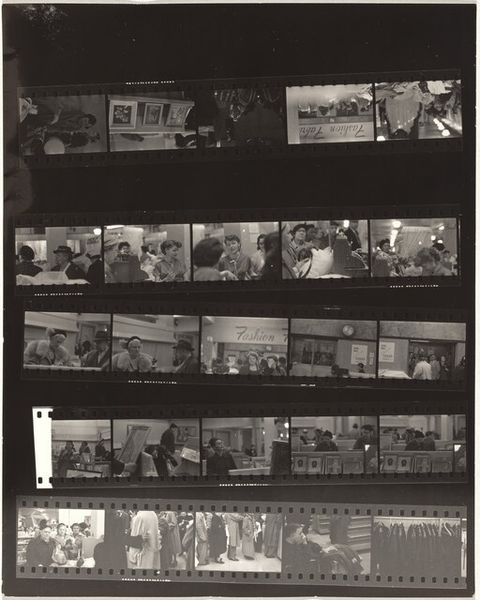
photography, gelatin-silver-print
#
portrait
#
film photography
#
street-photography
#
photography
#
gelatin-silver-print
#
ashcan-school
#
film
#
modernism
#
realism
Dimensions: overall: 25.2 x 20.3 cm (9 15/16 x 8 in.)
Copyright: National Gallery of Art: CC0 1.0
Curator: Robert Frank’s 1956 gelatin silver print, "Guggenheim 731--Omaha, Nebraska" is what we're examining today. A series of frames that give the viewer glimpses into interior spaces, people. What’s your immediate take on this layout? Editor: I get a wistful, fragmented feeling, like piecing together memories from a slightly out-of-focus dream. Each frame is a puzzle piece. It makes me think of forgotten America, moments caught then left behind. There is also something clinical about how the photo roll displays a scientific inspection maybe? Curator: I appreciate that interpretation. Consider the work's formal arrangement. The linearity imposed by the photo strip underscores a sequence—yet its intelligibility is compromised, as some images are obscure, figures face away from the camera, and there are few obvious narrative linkages. Editor: Right! The arrangement is deliberately obscuring instead of revealing. You look at that image of two fellows in hats and want to understand the drama but all you get is the bare minimum: light, contrast, framing and composition. They become symbols in that case. Curator: Precisely, The Ashcan School, an art movement relevant here, often presented gritty urban life through stark realism, although it can also feel cinematic, in that regard. These photographs were from "The Americans," an investigation that became seminal work on how to portray social fabric in photographs. Editor: It's bleak, sometimes. The diners, the hallways. America as seen through an outsider's lens. No glossy surface, you get all the grit, all the unease in those shadows, even a deep undercurrent of melancholy to the project itself. Each print as its own statement. Curator: Yet, the deliberate framing, that emphasis on light and shadow you've pinpointed—this all speaks to an exacting approach. Even "Snapshot Aesthetics" are often the result of calculation as opposed to randomness, even in such supposedly realist or casual images as those. Editor: It reminds me that everything, every fleeting interaction, has meaning, or the possibility for one, when given time. Curator: An excellent note to conclude. Frank makes us see significance in overlooked moments through the meticulous artistry of capturing supposedly transient scenes. It is worth pondering the arrangement alone to see how even banal images turn powerful.
Comments
No comments
Be the first to comment and join the conversation on the ultimate creative platform.
